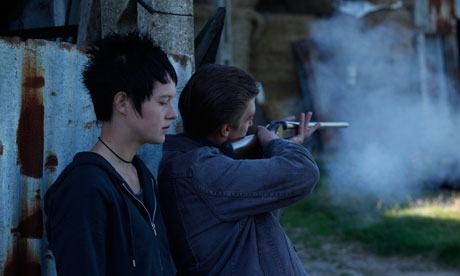
A follower of Robert Bresson and admirer of the Catholic novelist Georges Bernanos, the maverick French film-maker Bruno Dumont is famous for religious fables that make no concessions to popular audiences and are performed by deliberately inexpressive non-professional actors. His last film, Hadewijch, centred on a novice so zealous that she was thrown out of her convent and fell in with an Islamic terrorist. Hors Satan, his sixth film and perhaps his most compelling, is set in a bleak, thinly populated, hauntingly beautiful corner of Pas de Calais near Boulogne, an area he's worked in several times before. A raggedly dressed ascetic figure, called simply "the guy" (le gars) in the cast list and resembling El Greco's Christ or the Spanish student Pasolini chose to play Christ in his St Matthew's Gospel film, drifts around the locality, saying little and living rough in the sand dunes. He's fed by local families and frequently stops for silent prayer in compositions inspired by Jean-François Millet's paintings of French peasants. He shoots the abusive father of a teenage goth who attaches herself to him and then batters to death a forest guard who harasses her. He refuses her sexual advances, but he makes violent love to a hiker and rapes the comatose daughter of a local woman, thus restoring her consciousness.
The rape scene inevitably brings to mind Dennis Potter's controversial play Brimstone and Treacle, and Dumont's film appears to be dealing with a similar provocative theme, the notion of the closeness of the sacred and the demonic, the idea that good and evil, the Christ-like and the satanic, are different sides of the same coin. The film is shot in widescreen by Dumont's regular cinematographer, Yves Cape, and alternates between extreme long shot and close-up. The dialogue is minimal, there is no music, and everything on the soundtrack was recorded simultaneously with the images, including, so Dumont claims, the noise from the tracks of the camera dolly.

